How does AI work?
AI works by learning from experience (data) just like humans learn from experience. Through the training process, machines gradually generalize knowledge from sample data and form models to apply later.
Artificial intelligence (AI) is increasingly appearing in our daily lives, from the movie recommendations Netflix suggests to self-driving cars like those from Waymo. Have you ever wondered how AI works? Behind every smart application is a process that allows machines to learn from data and make decisions.
In this article, we will explore an easy-to-understand explanation of the principles behind how AI works, focusing especially on machine learning systems, which are at the heart of most modern AI.
AI "learns" and makes decisions based on data
At its core, AI operates by learning from data. Instead of being programmed with fixed rules for every situation, AI systems (especially those using machine learning) are provided with large amounts of data and automatically discover patterns or hidden rules within that data.
Then, they use what they have learned to predict or make decisions when encountering new data. This process is similar to how humans learn: we observe many examples, draw conclusions, and then apply that experience to new situations.
During training, the system gradually adjusts internal parameters to improve its accuracy. As a result, the AI forms a model capable of recognizing whether an image is a cat or a dog. When given a new (unseen) image, the model will predict whether it is a cat or dog based on what it has learned. If the prediction is wrong, the AI can be fine-tuned (using mathematical algorithms) to improve accuracy next time.
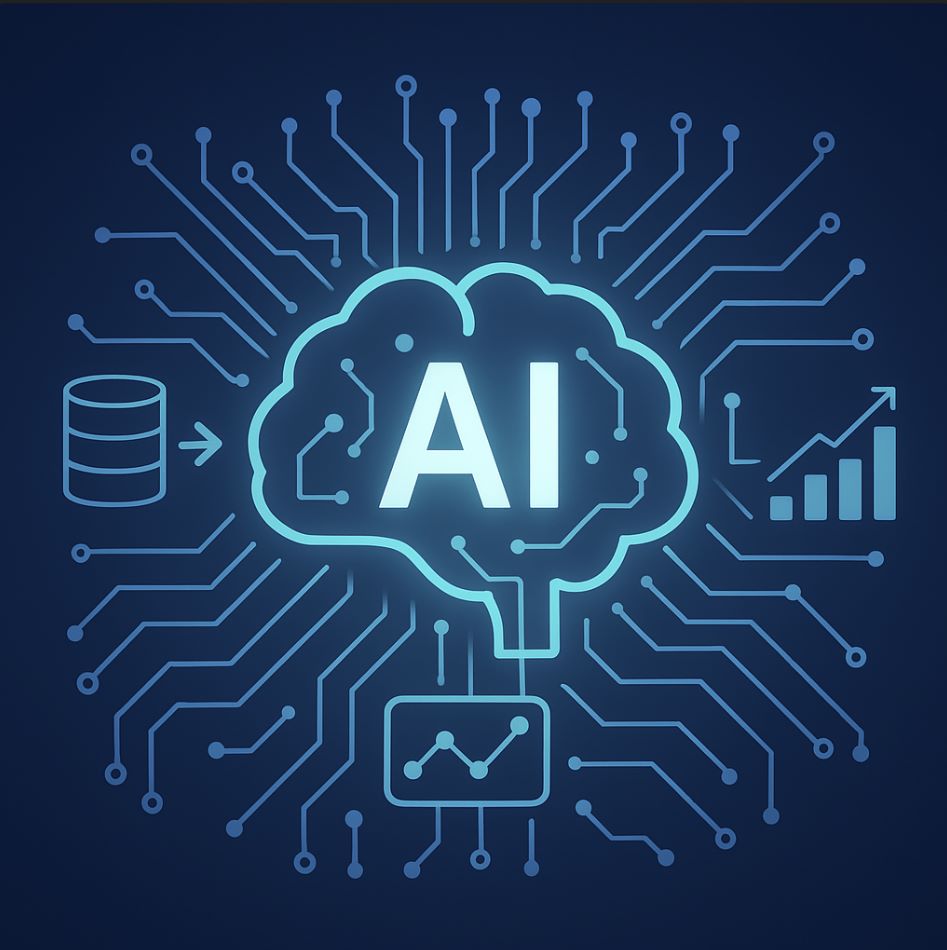
The Four Key Steps of AI Learning Process
In simple terms, the AI learning and operation process typically includes the following key steps:
Data Collection (Input)
First, AI needs input data to learn from. Data can come in many forms: numbers, text, images, audio, etc., and is usually carefully collected and prepared. For example, to train an AI to recognize cats, you need to gather tens of thousands of cat (and non-cat) images and label them accordingly.
Model Training (Learning/Training)
Next is the phase where the machine learns from data. The input data is fed into a learning algorithm (machine learning algorithm). This algorithm searches for patterns or correlations in the data and gradually adjusts internal parameters to fit the data.
In the case of artificial neural networks (common in deep learning), training means adjusting the weights of connections between neurons through many iterations. The AI continuously tries to predict on the training data and self-corrects based on the difference between its prediction and the actual result (this process is called backpropagation in neural networks).
Making Predictions/Results (Inference)
After training, the AI has a trained model. Now, when it receives new input data (which it has never seen before), the AI can apply the learned model to make predictions or decisions.
- An AI model that distinguishes cats and dogs can look at a new photo and predict "this is a cat" with a certain confidence
- An AI trained on banking transaction data can predict which new transactions are fraudulent
- A model trained on medical data can suggest diagnoses for new patients
This phase is called inference – AI applies learned knowledge to real situations.
Feedback & Improvement
An important feature of AI (especially machine learning systems) is the ability to improve itself over time. If AI produces results and receives feedback on accuracy (e.g., humans indicate whether the prediction was right or wrong), it can adjust the model to better fit the data.
Returning to the cat/dog classification example: if the model misclassifies some cases (e.g., mistakes a dog for a cat), engineers can add more data on difficult cases or adjust the model's architecture/hyperparameters so the AI learns more. Through continuous updates like this, AI becomes increasingly accurate and intelligent over time.
AI systems operate by combining three main capabilities: learning from data, applying logic to infer results, and self-correcting from errors. During the learning phase, AI collects and extracts information from data (creating "knowledge"). During the inference phase, AI uses the learned knowledge to handle new situations and produce outcomes. And through self-correction, AI continuously refines its operation to improve accuracy.
— Core AI Operating Principles
This combination of learning, reasoning, and self-adjustment forms the power of modern AI systems.
A simple example illustrating how AI works
Let's consider a real-world example to better illustrate the above process: an AI chatbot that automatically replies to messages. Suppose you want to build a chatbot that supports customers and can naturally answer questions in Vietnamese.
Data Collection
Chatbot Training
User Response
Improvement Over Time
This example clearly shows how a practical AI "learns" and operates: learning from past data to apply to future situations. Whether classifying cats/dogs or answering customer questions, the fundamental principle remains the same.
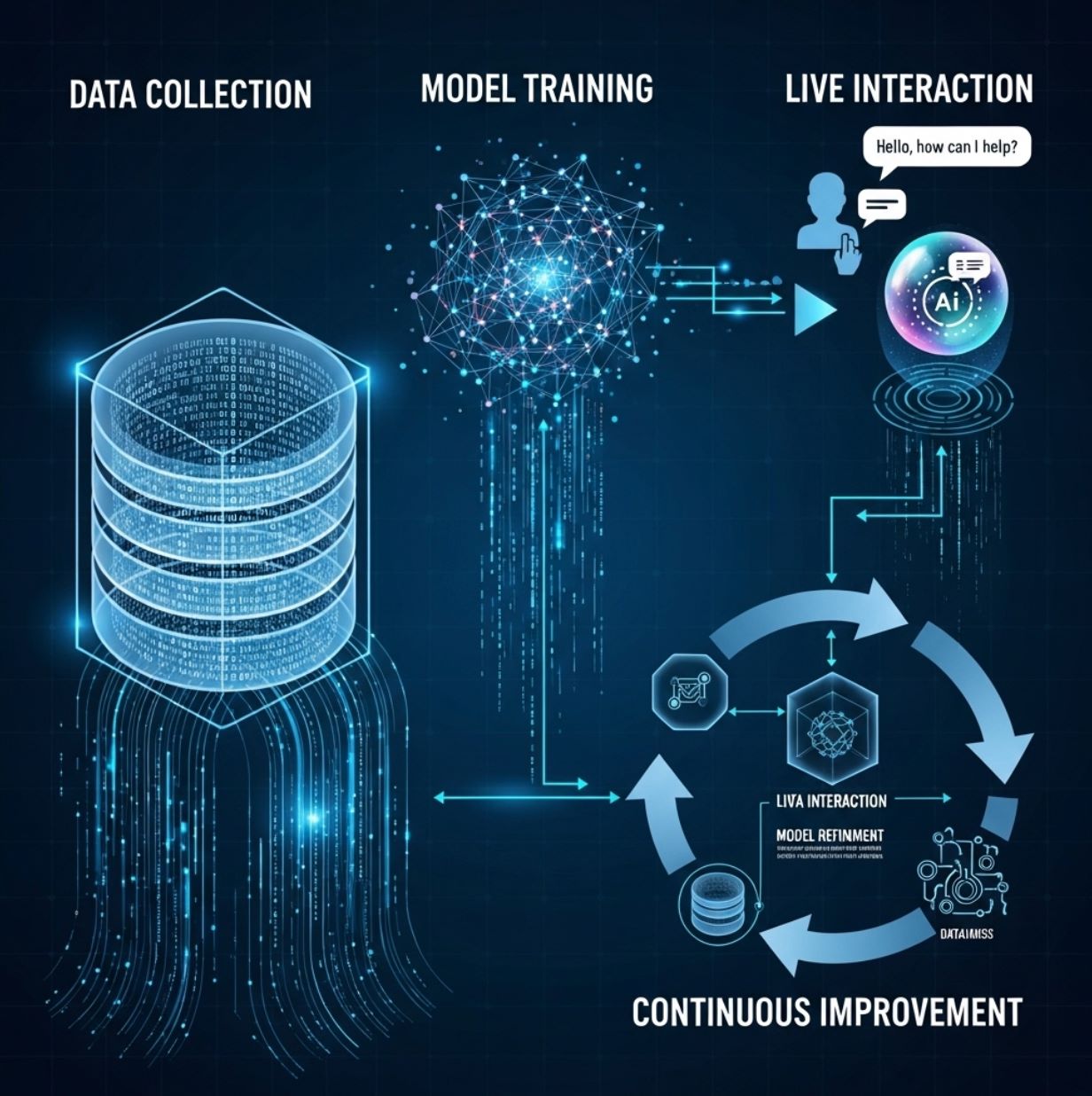
How does generative AI work?
A recent prominent trend in AI is Generative AI – AI systems capable of creating new content such as text, images, or audio that never existed before. So how does generative AI work, and what makes it different?
Classification & Prediction
- Recognizes patterns
- Makes predictions
- Classifies data
- Selects from existing options
Content Creation
- Creates new content
- Generates text, images, audio
- Combines learned patterns
- Produces original outputs
In fact, generative AI is also based on deep learning from massive data, but instead of just predicting or classifying, the model is trained to generate new outputs based on learned patterns.
Large Language Models
Take the example of a large language model like ChatGPT: this model is trained on billions of words of text (books, articles, websites) to learn relationships between words and sentences.
- Tens of billions of parameters
- Predicts the next word in sequence
- Creates fluent, contextual responses
AI Art Generators
AI art generators like Midjourney and DALL-E work by deeply learning the "language" of images and then building new visual products on demand.
- Foundation models trained on massive datasets
- Transformer architecture
- Creative content generation
When used, instead of replying with pre-stored answers, ChatGPT creates new responses by selecting each next word based on learned probabilities. The result is a fluent text that reflects the language style from training data but with entirely new content.
This allows programs like ChatGPT or Midjourney to generate new content (text, images, music, etc.) based on learned knowledge, rather than just selecting a pre-existing answer.
The special feature of generative AI is that it not only recognizes or analyzes but actually creates to some extent. Of course, this creativity is still based on what the AI has learned – it combines and transforms patterns it has seen to create something new. But the results can be very diverse and rich, making generative AI a powerful tool in content creation, design, entertainment, and many other fields.
— The Power of Generative AI
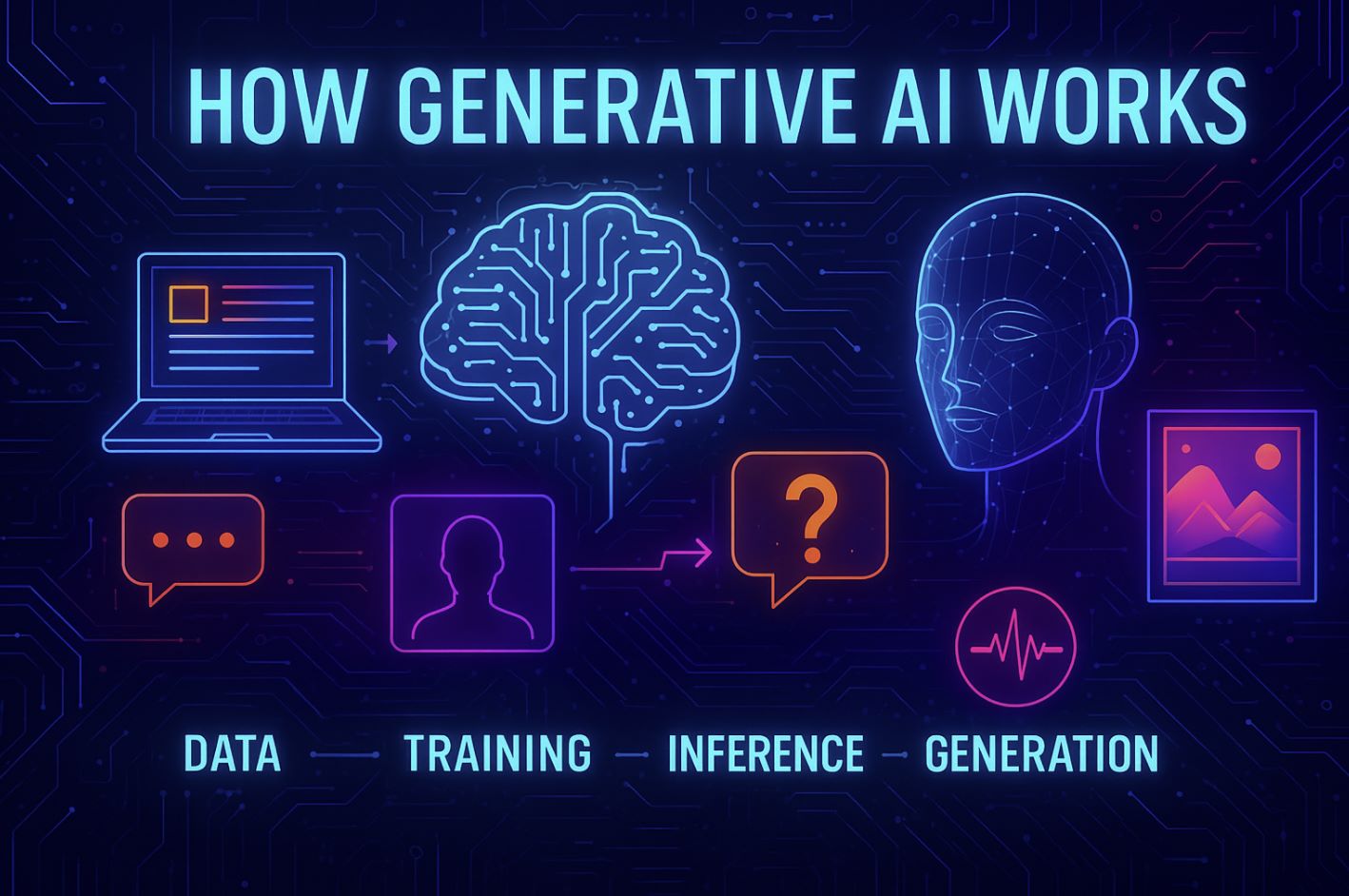
Key Takeaways
In summary, AI works by learning from experience (data) just like humans learn from experience. Through training, machines gradually generalize knowledge from sample data and form models to apply later.
Pattern Discovery
AI discovers hidden patterns in data to solve problems effectively
Continuous Learning
Systems improve through trial and error, continuously enhancing performance
Practical Applications
From image recognition to automatic text generation and art creation
Although underlying algorithms may vary – from simple decision trees to deep neural networks with billions of parameters – the common goal of AI is to discover hidden patterns that help solve problems. Thanks to massive data and powerful computing today, AI has achieved remarkable results, from accurate image and voice recognition to the ability to automatically write text and create art.
Follow INVIAI to stay updated with the latest AI knowledge!



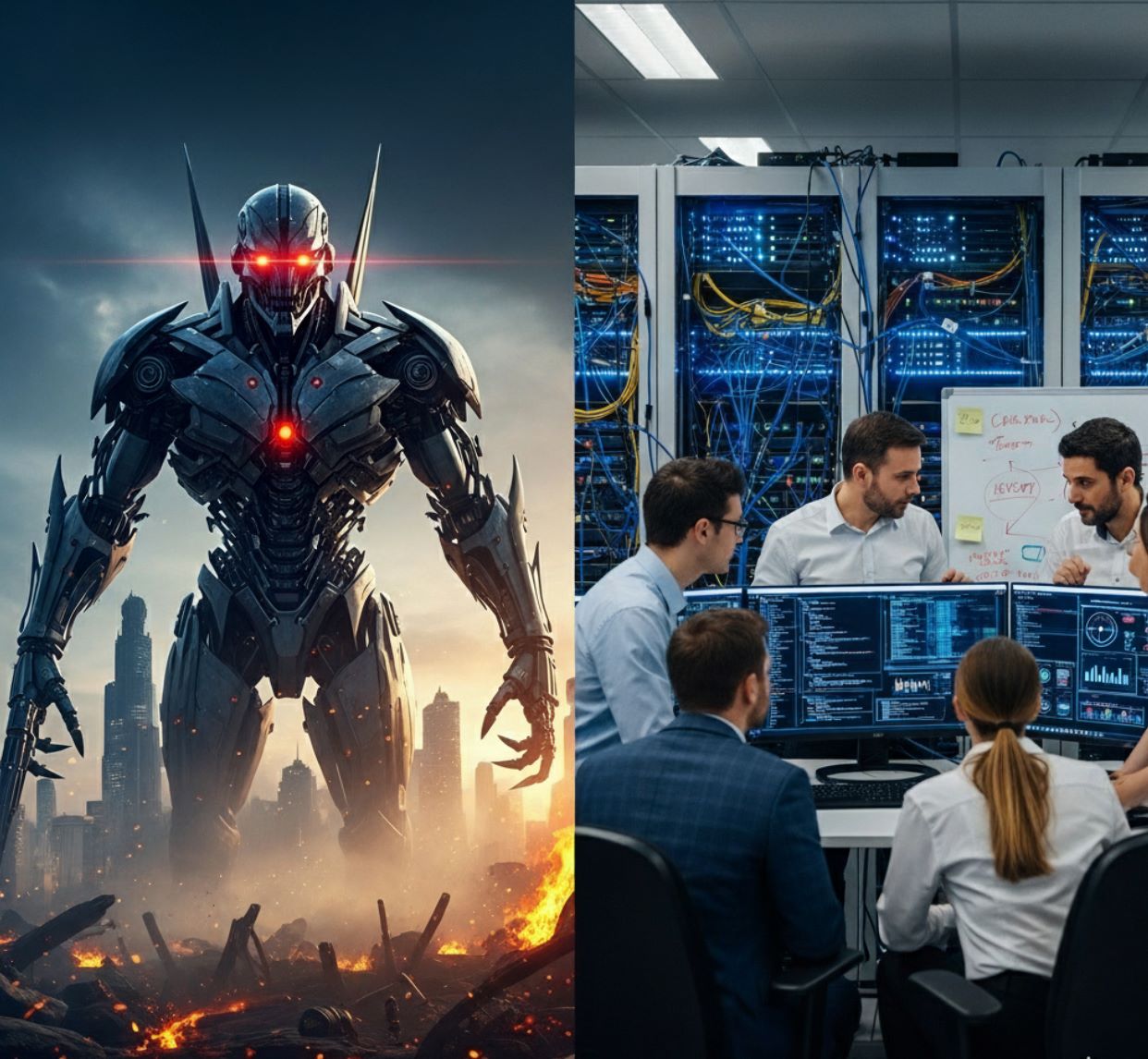
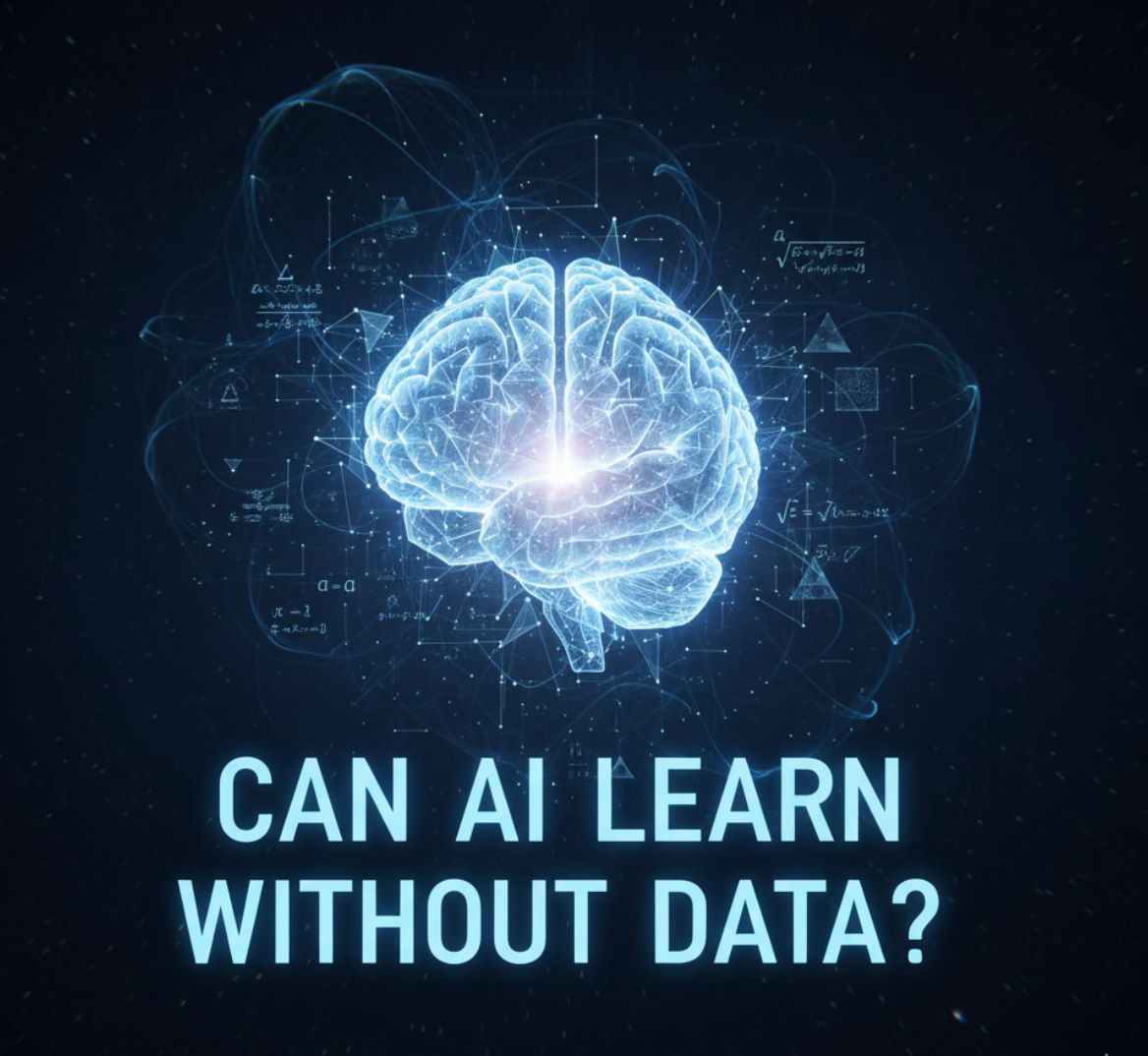
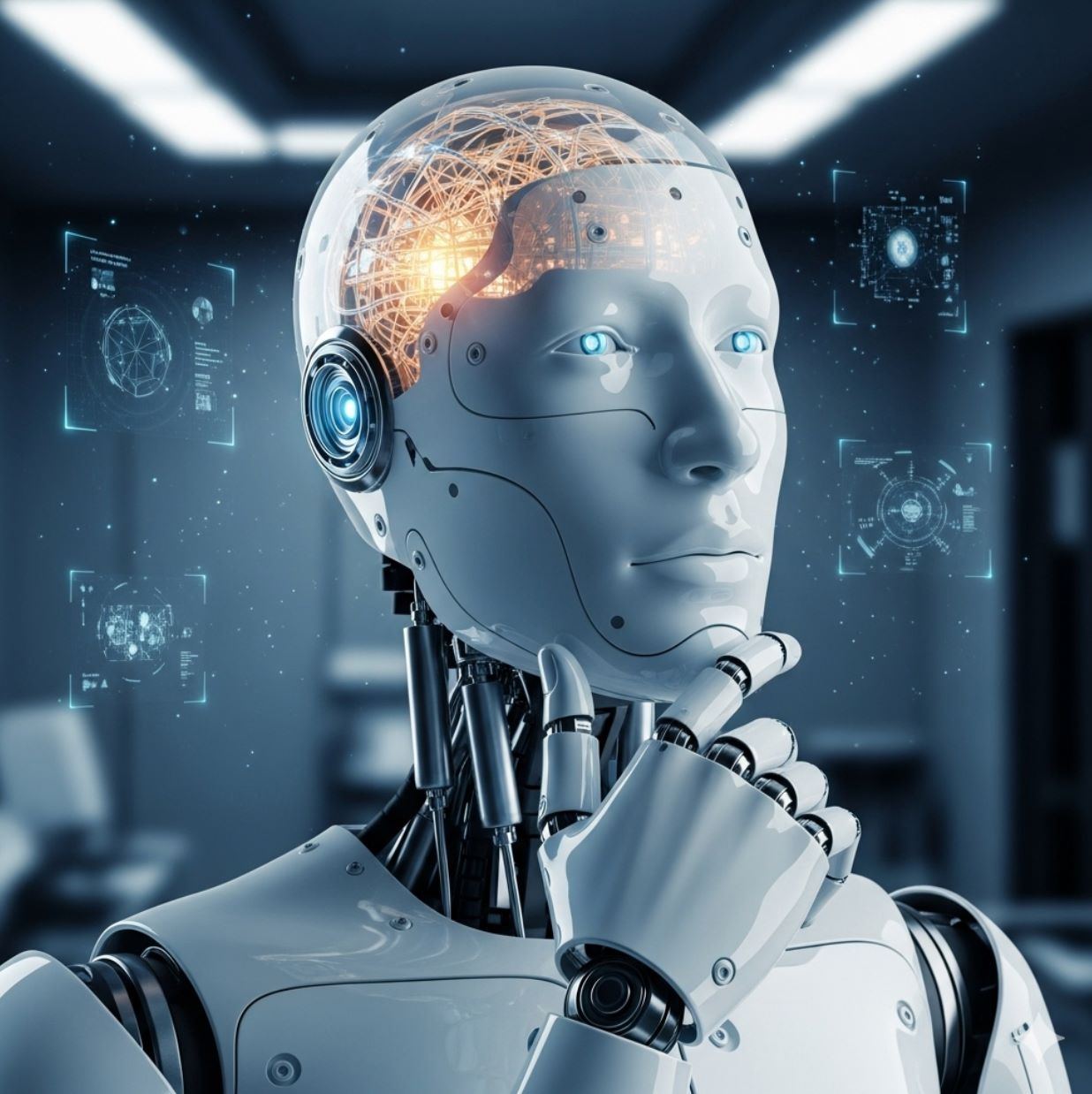
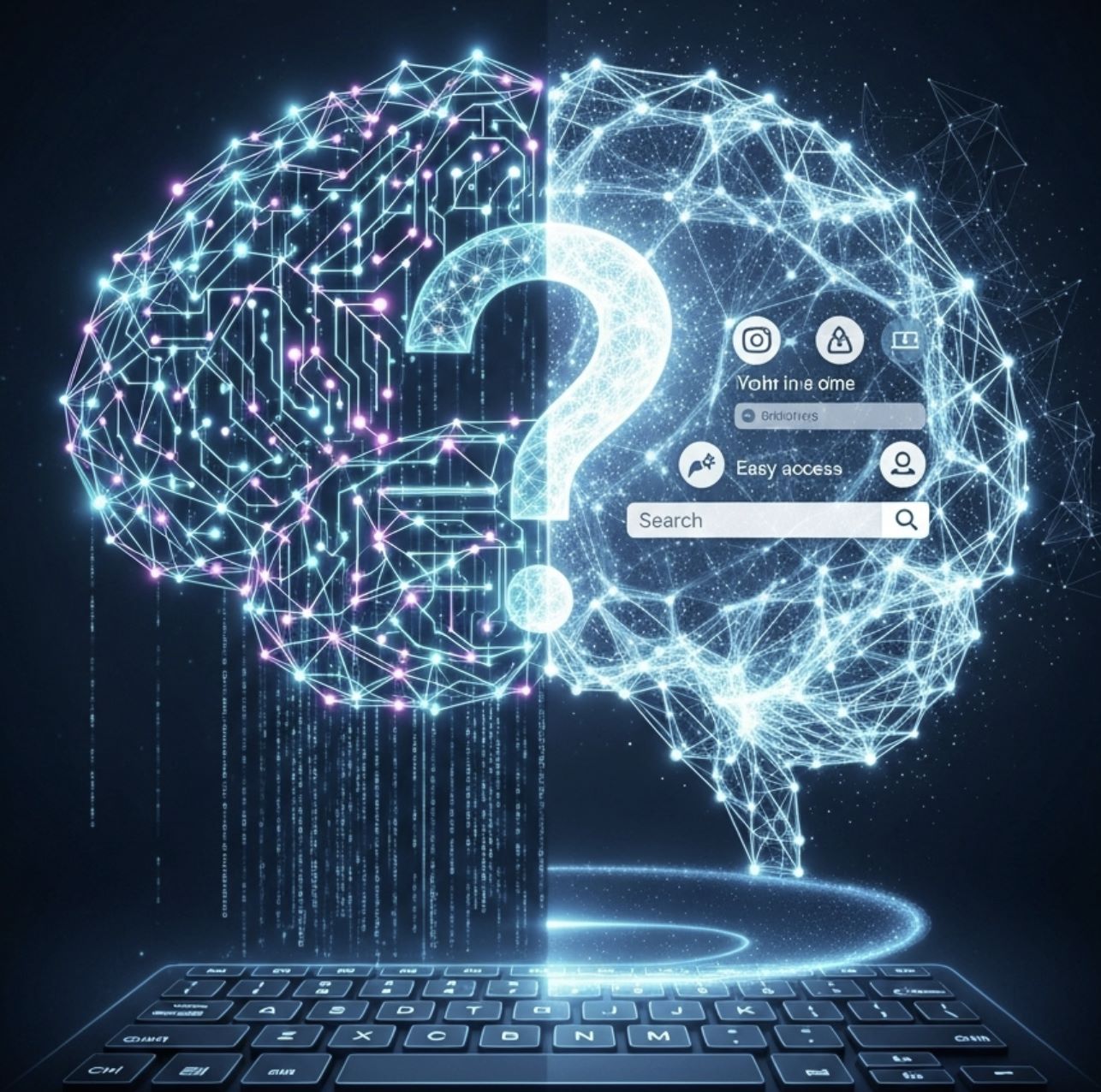
Comments 0
Leave a Comment
No comments yet. Be the first to comment!